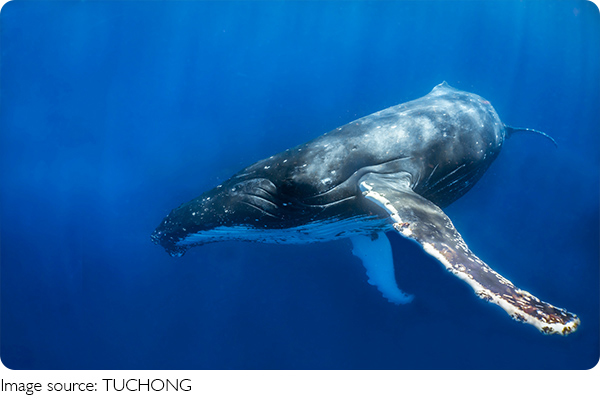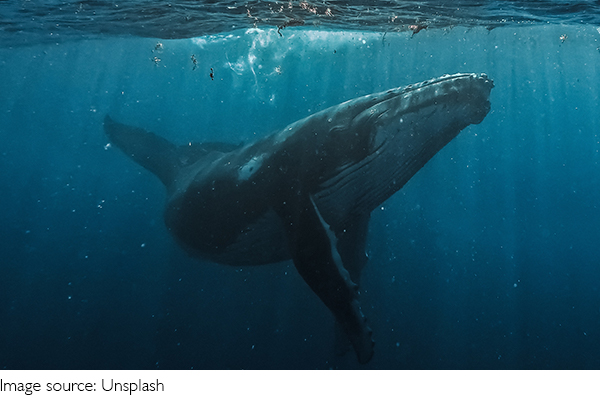Gray Whale Navigation

Every year, gray whales make one of the longest migrations in the animal kingdom—traveling up to 20,000 kilometers round trip.
They swim from the cold feeding grounds in the Arctic to the warm breeding lagoons of Mexico, and then back again. But how do they know where to go without maps, compasses, or GPS? That's exactly what we're exploring today.
They Follow an Ancient Route
Gray whales have been following the same migration path for thousands of years. This path is not random—it hugs the coastline of North America, providing them with a natural guide. By staying close to land, the whales can avoid getting lost in open water, use the coastline as a visual cue, and find resting spots along the way.
Earth's Magnetic Field May Help
One of the most fascinating theories is that gray whales use Earth's magnetic field to guide them—like a natural compass. Scientists believe whales may have tiny magnetic particles in their bodies that help them detect the planet's magnetic lines. This would allow them to sense direction even when visibility is low, such as in deep water or cloudy conditions.
Interestingly, some whale strandings are thought to be linked to changes or disturbances in the magnetic field, which could confuse their internal compass.
Sound Plays a Huge Role
Whales rely heavily on sound to understand their surroundings. Underwater, sound travels farther than light, so gray whales use it to “listen” to the ocean. They may pick up on underwater landmarks, like seafloor shapes or currents, which help them know where they are.
Gray whales also have good memories. Once they've traveled a route, they can remember the "soundscape" of certain areas and use those familiar underwater noises as reference points.
Sunlight and Ocean Conditions Matter Too
Some scientists suggest that gray whales may also use the position of the sun to stay oriented—much like how sailors used to navigate with the stars. They might sense the direction of the light above them, or feel the change in water temperature and salinity as they move between regions. All these natural signs help the whale build a picture of where it is.
They Stick with the Group
Gray whales don't always travel alone. Often, they move in small groups, especially mothers with calves. Younger whales may learn the route by following experienced adults. This shared travel helps protect the young and reinforces the traditional paths.
Even solitary adults benefit from shared knowledge of the migration route, as it's passed down through generations.
Why Migration Matters to Them
The journey isn't just for fun—it's necessary for survival. The Arctic waters offer rich feeding grounds full of small crustaceans, while the warm lagoons in the south are safer for giving birth and raising calves. Without this back-and-forth journey, gray whales wouldn't be able to grow, breed, or thrive.
What We're Still Learning
Even with all these theories, we still don't fully understand how gray whales navigate so well. Technology like satellite tracking and underwater microphones has helped researchers study their routes, but the full picture is still unfolding.
That makes their yearly journey even more impressive—these animals are using natural tools we barely understand to complete one of Earth's most incredible round trips.

Let's Keep Exploring the Mystery
The next time we think about getting lost on a road trip, let's remember the gray whale. Without any high-tech tools, it swims thousands of kilometers with stunning accuracy. It's a reminder of how much nature still has to teach us.
Have you ever seen a whale on the move—or visited a place where they pass by? Would you trust your sense of direction as much as a gray whale does? Let's talk about it!
Gray whales
Video by Deep Marine Scenes
-
 Streak-Free Mirrors3 Simple Tricks to Clean Mirrors Without Leaving Streaks
Streak-Free Mirrors3 Simple Tricks to Clean Mirrors Without Leaving Streaks -
 Tackle Debt? Read This!Struggling to pay debt with random income? Find out how to win this fight now!
Tackle Debt? Read This!Struggling to pay debt with random income? Find out how to win this fight now! -
 Fresh Orange JuiceWant to make orange juice that's healthier and tastier than store-bought? Let’s learn how to do it right at home!
Fresh Orange JuiceWant to make orange juice that's healthier and tastier than store-bought? Let’s learn how to do it right at home!